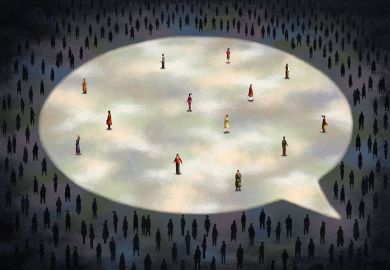The new Jewish Museum in Berlin, designed by Daniel Libeskind, is such a remarkable building that it is already attracting thousands of visitors every week, even though it is still an empty shell. This emptiness will resonate with anyone who reflects on Germany's destruction of its Jewish heritage.
Unlike the new wing at the Imperial War Museum in London, the Berlin Museum is not to be dedicated to the Holocaust. This point has been repeatedly emphasised by Michael Blumenthal, the German-born American political and business leader who is the museum's chief executive. But what is the alternative? Answers to this question are suggested by three recent books - the first by Blumenthal himself, who was forced into exile by the Nazis as a child and survived the war with his parents in Shanghai.
Blumenthal is not a trained historian but when during the 1990s he began to reflect on the events that shaped his early life, he had the idea of using the experiences of his ancestors to reconstruct the life of seven generations of German Jews. The story begins in the 1680s with the rise of Jost Liebmann, court jeweller to the elector of Brandenburg. It culminates with vivid reminiscences of the Kristallnacht pogrom of November 1938, which forced the Blumenthal family to flee.
The emphasis is on the extraordinary resilience with which German-speaking Jews responded to the restrictions imposed on them. Anti-Jewish prejudices certainly caused intense distress, but they also served as a spur to great achievements, in both the commercial and the cultural sphere.
Belief in education was "the one value that Jews and gentiles shared" and, by the time of the Weimar Republic, "there were few areas of German intellectual and professional life not profoundly touched by the Jewish presence".
The three most vivid chapters deal with Rahel Varnhagen, whose Berlin salon helped stimulate the remarkable cultural revival around 1800; Giacomo Meyerbeer, who rose to the position of musical director in Berlin, exemplifying the cosmopolitanism of German cultural life in the mid-19th century; and Arthur Eloesser, an influential journalist and drama critic. The prejudices they encountered had the paradoxical effect of intensifying their identification with German culture. Looking back on his career in 1934, Eloesser emphasised "the peculiarly German-Jewish literary and artistic inclination". This was the symbiosis to which Jews of his generation aspired, and it will certainly yield rich materials for the Berlin Museum. But for Blumenthal, the fundamental question why racist ideas "took hold so much more in Germany than elsewhere" remains a "mystery".
Blumenthal's narrative gives a human face to historical events, and the attractively priced paperback will appeal to the general reader. To appreciate the more complex ideological factors, we must turn to Ritchie Robertson's The "Jewish Question" in German Literature .
The debate begins with Lessing, Dohm and Humboldt, the three Christian thinkers who, at the end of the 18th century, argued the cause of enlightened toleration. The frustrations of the "emancipation contract", which presupposed that Jews should better themselves before being granted equality, are correlated with a mass of pamphlets and other publications on the "Jewish question" - an estimated 2,500 appeared between 1815 and 1850. Robertson highlights the paradox that the pressures of anti-Semitism, persisting after the granting of full civil rights in 1871, elicited some extraordinary achievements, notably in the work of Freud, Schnitzler, Stefan Zweig, Karl Kraus, Kafka, Canetti and Else Lasker-Schuler. We are also introduced to a large cast of lesser-known figures, such as Karl Emil Franzos, author of the novel Der Pojaz (The Clown). The book concludes with the tragic failure of the emancipation process, reflected in the Zionist visions of Herzl, Buber and Arnold Zweig.
In a central chapter devoted to the varieties of anti-Semitism, Robertson rightly insists that hostility towards Jews was a discontinuous and protean phenomenon. It was Wagner who established the influential myth of "the loveless, rational Jew cut off from the warm, intuitive folk community and seeking vengefully to destroy it". Robertson's tireless labour also brings to light a mass of minor authors, including influential exponents of the "cultural anti-Semitism" of the 1920s. He identifies "a succession of overlapping varieties of anti-Semitism", showing that when one variety became untenable, another took its place. But he takes the argument a stage further by analysing how Jews themselves internalised these prejudices.
Given his skill in deconstructing the phenomenon of anti-Semitism, it is surprising that Robertson should give such prominence to another monolithic concept used by cultural historians - Jewish self-hatred. This certainly became a key concept in debates about Jewish identity during the 1920s, but scholars should be cautious about transforming a problematic ideological construct into an indubitable historical phenomenon. Cutting off your sidelocks - one of the symbolic episodes in Der Pojaz - is not a sign of pathological self-aggression, but a remodelling of the self, designed to facilitate entry into the modern world.
The belated engagement with modernity, which shaped German-Jewish experience, resulted in unbearable tensions both politically and psychologically, as Shulamith Volkov and Sander Gilman have shown. But the concept of self-hatred is too reductive to do justice to authors like Kraus and Elias Canetti, who made satire out of their struggle with themselves.
Robertson's scholarly work deserves a place in every university library, although the price will deter the general reader.
A further distinctive feature is the dialogue with other researchers. He builds particularly on publications of the last two decades, but dialogue does not preclude disagreement. The thematic organisation of the book has great merits, but the sketchiness of the historical structure means that Robertson, too, begs the fundamental question of why racist ideas took a special hold in Germany. Here he might, following Reinhard Rurup, have attached more significance to the anti-Jewish legislation that shaped Christian-Jewish relations in 19th-century Germany. The state appeared to be on the side of the anti-Semites, and this made a decisive difference since one good law may outweigh a thousand pamphlets. Robertson understates the importance of the campaigns to repeal anti-Jewish legislation. It was not simply prejudice but the fragmentation of political power that enabled the reactionaries to frustrate Jewish emancipation.
However much one may admire the historical sweep of the books by Robertson and Blumenthal, there is no substitute for a close focus on specific communities. There have been many excellent books about the Jews of Vienna, but the culture of Berlin has not attracted the same attention. This deficiency is remedied by the excellent collection of essays edited by Emily D. Bilski, Berlin Metropolis: Jews and the New Culture, 1890-1918 , published in conjunction with a recent exhibition at the Jewish Museum in New York. This is a coffee-table book for connoisseurs. A series of scholarly essays, accompanied by striking illustrations, reminds us of the galaxy of artistic and literary talent in Berlin around 1900. Jews were so prominent, especially in journalism, publishing and the art market, that there was a political backlash exemplified by the debate in Der Kunstwart , analysed in an essay by Paul Mendes-Flor. The central figure in the book is the painter Max Liebermann, founder of the Berlin Secession, whose reception as a Jewish artist is perceptively analysed by Chana C. Schutz. In an equally informative essay on debates about the "alien element" in German art, Peter Paret shows how much German modernism owed both to Liebermann and to the art dealer Paul Cassirer. Far from dominating the cultural scene, they facilitated the activities of the far more numerous non-Jewish members of the Secession in a vibrant creative partnership. Thus, in Berlin between 1890 and 1918, symbiotic tendencies proved more important than ideological polarisations. Works in an exclusively Judaic idiom, no less than those expressing narrowly German ideals, had a marginal significance.
The "German-Jewish symbiosis" may politically have been an illusion, but culturally it proved exceptionally fertile.
Edward Timms is director, centre for German-Jewish studies, University of Sussex.
Berlin Metropolis: Jews and the New Culture 1890-1918
Author - Emily D. Bilski
ISBN - 0 520 2241 5 and 2242 3
Publisher - University of California Press
Price - £38.00 and £18.95
Pages - 265



